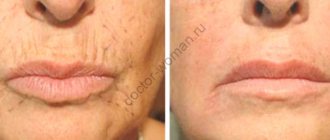June 3, 2021
Cancer occurs when cells begin to grow uncontrollably. Cells of almost any organ can acquire this feature. In addition, as the tumor grows, they can be transported through the blood or lymph to other areas of the body, settle there and give rise to the growth of new lesions. Such foci are called secondary cancer, or metastases, and the initial tumor, respectively, is called primary cancer.
Metastases in any organs are classified depending on which organ the tumor initially originates from. For example, a secondary focus of lung cancer in the liver will still be called lung cancer, it will just receive the prefix “secondary”. Sometimes it is not possible to determine in which organ the tumor first appeared. However, the study reveals its metastases in other parts of the body. If their primary focus cannot be determined, then doctors talk about primary cancer of unknown origin, or hidden primary cancer.
What formations on the skin should raise suspicion?
Most moles, brown spots and growths on the skin are harmless - but not always. If you have a lot of moles and freckles, you need to be very careful about any changes in pigmentation. When a mole begins to bleed or ooze fluid , you need to go to a dermatologist.
It is also necessary to monitor new formations on the skin. Many skin cancers are essentially colorless. They often appear as pink or pearly papules or scaly patches. These are signs of a primary neoplasm, and it is advisable to show them to the doctor. Bleeding and weeping skin lesions are of particular concern.
Tumor atypia
Any tumor consists of stroma and parenchyma. The stroma consists of the extracellular matrix, blood vessels, and nerve endings. Parenchyma is the tumor cells themselves. Their structure, as a rule, differs from normal cells - this is atypia. The difference may lie not only in the structure of the cells themselves, but also in their functioning, metabolism, etc. Therefore, there are several types of atypia:
- Morphological atypia. Can be cellular or tissue. In the first case, tumor cells lose the ability to mature and differentiate, as a result of which they acquire a large nucleus, irregular shape, and other characteristics that distinguish them from normal cells. With tissue atypia, the ratio of various tissue elements changes, for example, the ratio of the thickness of the epidermis and dermis.
- Biochemical atypia. Characterized by changes in tumor metabolism. It is this feature that plays an important role in the uncontrolled growth of newly formed tissue. In tumor cells, almost all types of metabolism change, but the most significant is the change in carbohydrate metabolism, which increases several tens of times. Other features include the predominance of protein synthesis over its breakdown, increased absorption of amino acids and water, accumulation of potassium ions and loss of calcium ions.
- Immunological atypia. Tumors are characterized by changes in antigenic structure. For this reason, the immune system cannot effectively “attack” the changed cells, as a result of which the latter can multiply and grow uncontrollably.
- Functional atypia. This is a consequence of the changes described above. Changes in the structure and metabolism of tumor cells inevitably lead to changes in their functions. This may be increased secretion of hormones, loss of the ability to phagocytose, production of substances that are not normally formed, etc.
Some types of atypia have made it possible to develop specific antitumor drugs. In particular, some cytotoxic drugs used during chemotherapy block the uptake of glutamine and glucose. These substances are used by certain tumors in large quantities and are necessary for the growth and division of pathological cells. Immunological atypia formed the basis for cancer immunotherapy. With the help of special drugs, it is possible to eliminate the “defense mechanisms” of the tumor, which make it “invisible” to the immune system.
ABCDE technique for cancer detection
The first five letters of the English alphabet are a guide to help you recognize the signs of cancer.
- A is asymmetry. Most skin cancer lesions are asymmetrical. If you draw a line through the middle of the hearth, the two halves won't line up, so it looks different from round to oval.
- B is the border. The borders of cancers tend to be jagged and may have jagged edges, while regular moles tend to have smoother, more even borders.
- C is color. Multiple colors are a warning sign. While benign moles are usually one shade of brown, cancerous moles can be various shades of tan, brown, or black. Red, white, or blue colors may also appear as they grow.
- D is the diameter. It is already worth paying attention to the spring if its size is more than 6 mm. Some experts say it's also important to look for any damage, regardless of size, that is darker than others. Sometimes, amelanotic melanomas are colorless.
- E is for evolution. Any change in the size, shape, color or height of a spot on your skin, or any new symptom in your skin, such as bleeding, itching or crusting, may be a warning sign of melanoma.
If you notice these warning signs or anything new, changing, or unusual on your skin, contact your dermatologist immediately.
Localization
Oral cancer is usually classified by location. This is due to the fact that the area under discussion includes a large number of anatomical formations with significant diversity.
When choosing treatment tactics and the type of operation, the position of the tumor in the mouth plays a significant role. Different parts of the oral cavity are innervated differently, have different blood supply, and have different functional significance, so the prospects for treating absolutely identical tumors located in different places can differ significantly.
Based on location, oral cancer is usually divided into:
- Cheek cancer
- Floor of mouth cancer
- Tongue cancer
- Cancer in the alveolar ridge area
- Palate cancer
- Gum cancer
Cancer of the buccal mucosa
Cancer of the buccal mucosa ranks second in frequency (after cancer of the tongue) in the structure of oral cancer. Local factors, chemical and physical agents that cause chronic trauma to the mucous membrane have a significant influence on the increase in risk. To a greater extent than with cancer of other areas, such a predisposing factor as chronic traumatization by dentures and sharp edges of damaged teeth is relevant.
Floor of mouth cancer
This type of tumor accounts for 10-15% of all oral cancers. The floor of the mouth is formed by the structures between the tongue and the hyoid bone. The mucous membrane lining the bottom of the mouth has a developed submucosa, consisting of loose connective tissue and fiber. This area is richly supplied with blood. All this creates favorable conditions for tumor growth, spread and metastasis.
Tongue cancer
Tongue cancer is the most common type of oral cancer. The tongue is a mobile organ with a large number of nerve endings (receptors). Thanks to this, patients, as a rule, pay attention to the tumor that has arisen and have the opportunity to seek help in a timely manner. A developed network of blood and lymphatic vessels contributes to early tumor metastasis, primarily to peripheral lymph nodes.
Cancer in the alveolar ridge area
Cancer in this area develops either from mucosal cells or from the epithelial islets of Malasse. Epithelial islands of Malasse are the remains of epithelial cells in the thickness of the periodontium. Normally, these cells do not manifest themselves in any way, but under unfavorable conditions they can become a source of tumor. A distinctive feature of these tumors is the relatively early onset of symptoms, the teeth in the tumor growth area are exposed to it, and the patient begins to complain of pain.
Palate cancer
Palate cancer is rare. The hard and soft palates are separated, therefore the histological types of tumors of the soft and hard palate are different. Cylindromas and adenocarcinomas are more typical of the hard palate; the soft palate is more susceptible to squamous cell carcinoma.
Who is most at risk of skin cancer?
People with fair skin that burns easily in the sun are more likely to develop skin cancer. The skin generates its own protection against ultraviolet radiation using keratin and melanocytes , cells that produce melanin. They create a tan, protecting the skin from damage. However, when you get sunburned and your melanocytes are unable to respond quickly, you are at serious risk of developing skin cancer. Moreover, the greatest danger haunts those with blond and red hair, as they burn faster.
Risk factors for soft tissue sarcomas
Currently, some factors have been identified that increase the risk of developing soft tissue sarcomas.
Ionizing radiation is responsible for the occurrence of 5% of soft tissue sarcomas as a result of previous radiation for other tumors (eg, breast cancer or lymphoma). The average period between exposure to radiation and detection of soft tissue sarcoma is 10 years.
Diseases in the family. It has been found that some hereditary diseases increase the risk of developing soft tissue sarcomas. These include:
- Neurofibromatosis , which is characterized by the presence of multiple neurofibromas (benign tumors) under the skin. In 5% of patients with neurofibromatosis, neurofibroma degenerates into a malignant tumor.
- Gardner's syndrome leads to the formation of benign polyps and cancer in the intestines. In addition, this syndrome causes the formation of desmoid tumors (low-grade fibrosarcomas) in the abdomen and benign bone tumors.
- Li-Fraumeni syndrome increases the risk of developing breast cancer, brain tumors, leukemia, and adrenal cancer. In addition, patients with this syndrome have an increased risk of soft tissue and bone sarcomas.
- Retinoblastoma (a malignant tumor of the eye) can be hereditary. Children with this form of retinoblastoma have an increased risk of developing bone and soft tissue sarcomas.
The only way to prevent the development of soft tissue sarcomas is to (if possible) eliminate known risk factors.
How to detect skin cancer on the body?
The best way to detect skin cancer is to examine yourself. When checking, you should look at the spots on the skin. And you should check everything from the scalp (parting the hair to check the entire scalp) to the spaces between your toes and the soles of your feet.
If possible, ask your partner to help you. He can examine hard-to-reach areas of the scalp and back.
By getting into the habit of checking your skin, you will be able to notice changes. Checking monthly can be helpful. If you have had skin cancer, your dermatologist will be able to tell you how often you should check your skin.
People of all ages get skin cancer.
Skin testing can help you detect skin cancer early, when it is highly treatable.
Incidence of soft tissue sarcomas
In 2002, 3055 cases of soft tissue sarcomas in adults were identified in Russia. At the same time, the incidence rate for both sexes was 2.1. In children, soft tissue sarcomas account for 4-8% of all malignant tumors. Every year, 5-9 cases of such cases are registered per 1 million children.
In the United States in 2004, an estimated 8,680 cases of soft tissue sarcomas could be identified (4,760 cases in males and 3,920 in females). These data apply to children and adult patients.
What does skin cancer look like? Photos and description of signs.
Skin cancer manifests itself on the body in different ways. It might look like:
- A mole that changes or a mole that looks different from your others
- Dome-shaped growth
- scaly spot
- A wound that doesn't heal or a wound that heals and comes back
- Brown or black streak under the nail
It can also manifest itself in other ways.
To detect skin cancer on your body, you don't need to memorize a long list. Contact your dermatologist if you notice a spot on your skin that:
- Differs from others
- Changed
- Itchy
- Bleeding.
Find out if the treatment is prescribed correctly
How do basal cell and squamous cell skin cancers manifest?
Most people have basal cell or squamous cell carcinoma . The most important thing to know about these types of skin cancer is that they are very superficial. They do not penetrate too deeply into the layers of the skin. Therefore, if cancer of one of these types is detected early enough, the doctor prescribes a simple resection. A dermatologist or physician may perform a biopsy to determine the nature of the growth.
Squamous cell and basal cell carcinomas are often identified by external characteristics .
It may take the form:
- clearly colored plaque;
- clusters of brown nodules;
- ulcers raised above the skin.
Such tumors are frozen, burned or excised. All of the above methods are equally effective.
It is important to start treatment as early as possible, since malignant neoplasms of these types do not grow deep into the skin . The best option is to treat cancer in Israel. In rare cases, when left untreated, basal cell and squamous cell tumors increase in size and spread into deeper layers of tissue.
Follow-up and control
Treatment for people diagnosed with cancer does not end when active therapy is completed. Your doctor will continue to check to see if the cancer has returned, monitor any side effects, and monitor your overall health. This is called follow-up. It consists of regular medical examinations and tests.
Relapse control
One of the goals of follow-up is to monitor relapse, that is, the reoccurrence of the disease. Cancer recurs because small clusters of malignant cells may remain in the body. Over time, these cells may increase in size until they appear on test results or cause symptoms. During follow-up, your doctor may provide you with personalized information about your risk of recurrence. Your doctor will ask specific questions about your health. You may need to have blood tests or imaging tests as part of your regular follow-up. Follow-up recommendations depend on several factors, including the type and stage of head and neck cancer initially diagnosed and the treatment received. The doctor will also tell you what signs and symptoms to monitor.
Monitoring long-term and delayed side effects
Treatment of malignant tumors is accompanied by various side effects. Long-term effects persist after a period of therapy. Delayed side effects may take months or even years to develop. Long-term and delayed effects may include physical and emotional changes.
Discuss with your doctor the risk of these side effects depending on the type of cancer, your individual treatment plan, and your overall health. If your treatment is known to have some delayed effects, you may need to undergo certain additional tests. For example, if you received radiation therapy, your doctor will recommend that you have regular blood tests to check your thyroid function. Your doctor may refer you to a specialist to treat delayed effects.
Rehabilitation is a major part of follow-up after treatment for head and neck cancer. Patients may receive physical therapy to maintain motor function and range of motion, as well as speech and swallowing therapy to regain skills such as speaking and eating. Proper assessment and treatment can often prevent long-term speech and swallowing problems. Some patients may need to learn new ways of eating or different ways of preparing food.
Patients may look different, feel tired, and be unable to speak or eat as well as before. Many people experience depression. Support groups help patients cope with changes after treatment.
Maintaining your own medical records
You and your doctor will work together to develop a personalized follow-up plan. Be sure to discuss any concerns you have about your own future physical or emotional health.
How does melanoma manifest?
Melanoma differs from basal cell and squamous cell skin cancer primarily in that, unlike previously described types of cancer that do not penetrate into the deeper layers of tissue, this tumor has the potential to grow and spread. The deeper it penetrates the skin, the higher the risk of its further spread throughout the body. Metastatic melanoma is an extremely dangerous disease. However, melanoma can be completely cured if it is detected at an early stage, before it has time to grow deeper into the skin and form metastases in the internal organs.
Melanoma not only penetrates deeper into the skin, but individual cells spread around the primary tumor. Therefore, when resection of melanoma, the surgeon necessarily removes a fragment of normal tissue. For example, if the tumor is comparable in size to a pencil cut, you need to additionally remove about a centimeter of healthy skin around the entire circumference of the melanoma - and possibly more if the cancer has penetrated into the deeper layers of the tissue.
When melanoma grows deep into the skin, there is a risk of it spreading to other organs. Typically, in cases of metastases, secondary lesions form in the lymphatic system, namely in the lymph nodes. Lymph nodes in the armpits, groin or neck begin to enlarge and can reach considerable sizes. From there, cancer cells can spread to internal organs. Therefore, in cases of deep germination of melanoma, the doctor not only removes the tumor itself, but also checks the lymph nodes. They should not show any signs of cancer spreading.
Check the price with a specialist
Stages
Staging is a determination of where the cancer is located, whether and where it has spread, and its effect on other parts of the body.
Doctors use diagnostic tests to determine the stage of cancer; they may need information based on tissue samples obtained at surgery, so staging may continue until all tests are completed. Information about the stage helps the doctor determine which treatment is optimal and predict the possibility of recovery.
TNM tumor classification system
One way to determine the stage of cancer is the TNM system. Doctors use the results of diagnostic tests and scans to answer questions such as:
- Tumor (T): its size and location?
- Lymph nodes (N): extent of spread of the process to the lymph nodes?
- Metastasis (M): Has the cancer spread to other parts of the body?
The results are combined to determine each patient's cancer stage. Stage provides a common way to describe cancer so doctors can work together to plan the best treatment.
How the quality of medications affects the cure for skin cancer
For advanced skin cancer, especially melanoma, the main treatments are chemotherapy and immune therapy. In this case, the quality of medicines becomes of great importance. This is especially important if the patient is undergoing immune therapy, because... Such drugs are not cheap.
If you have been prescribed drug treatment for skin cancer, it is best to purchase medications in Israel.
- Counterfeiting of medicines is prohibited in Israel.
The Israeli Ministry of Health strictly controls the quality of medicines through test purchases and inspections of pharmacies. A pharmacy or pharmacist who sells a low-quality drug to a client will lose its license and face criminal charges. - In Israel, licensing of innovative drugs is carried out as quickly as possible.
This allows Israeli clinics to quickly introduce into widespread clinical practice all new effective drugs appearing in the world. - The Israeli company TEVA is a world leader in the production of medicines.
Doctors in 60 countries around the world prescribe to their patients medications developed by this company.
Where can I buy Israeli medicines?
- In an Israeli pharmacy - after consulting a doctor.
If you undergo examination at the oncology center, the doctor will prescribe you the necessary medications, which can be purchased in Israel. - At your place of residence - using a telemedicine program.
As part of this program, you will also receive a consultation from an Israeli doctor - but remotely. You can order the medications prescribed by him and have them delivered to your home.
Cost of diagnosing skin cancer in Israel
In the table below, we present the cost of some procedures prescribed for the diagnosis of skin cancer at the Ikhilov Cancer Center.
| Diagnostic and treatment procedures | Price |
| PET-CT | $1491 |
| Examination and consultation with an oncologist-dermatologist | $567 |
| Biopsy revision | $511 |
| Operation Mohsa | $3318 |
| Photodynamic therapy | $361 |
| Removal of epidermal carcinoma | $511 |
| Detailed blood test | $407 |
Why is it worth treating skin cancer in Israel, at the Ichilov Cancer Center?
- Accurate diagnosis.
Modern research methods and extensive experience of Israeli oncologists and pathologists, gained in leading cancer centers in the world, make it possible to accurately determine the type and stage of cancer in order to select the optimal treatment program. - World-class specialists.
The treatment of skin cancer at the oncology center is carried out by top-class professionals, such as oncologist Professor Yakov Shekhter, the author of his own method of immune therapy for metastatic melanoma. The professor selects a personalized treatment protocol for each patient, which allows him to achieve the best possible results. - Innovative treatment methods.
For skin cancer, the oncology center uses:
- Alpha-DaRT brachytherapy is a safe method for removing non-melanoma skin cancer;
- therapy of metastatic melanoma using the TIL protocol (tumor infiltration with lymphocytes).
You can take the first step towards recovery right now. To do this, fill out an application and one of our doctors will contact you within 2 hours.
Or call: +972-3-376-03-58 in Israel and +7-495-777-6953 in Russia.
This consultation does not oblige you to anything and is completely free .
We guarantee you complete confidentiality and preservation of medical confidentiality. We will help you, just as we have helped other patients. [starbox]
Modern methods of treatment
Usually, with a secondary malignant skin lesion, metastases are present in other organs, so the general principles of treatment are the same as for any metastatic cancer. Chemotherapy, targeted therapy, immunotherapy are prescribed. Radiation therapy and surgery are used - but mainly for palliative purposes, since there is no convincing evidence that in this case these methods help to increase the life expectancy of patients.
Some scientific studies have shown that surgery helps increase the survival rate of patients with skin metastases from lung and stomach cancer. In other cases, operations are used to cope with symptoms (for example, if a tumor ulcerates or bleeds), remove disfiguring tumors, and improve the patient’s quality of life. Radiation therapy can achieve a good long-term palliative effect in the case of skin metastases in some malignant kidney tumors.
In some cases, other treatment methods are used:
- Imiquimod cream has an immunomodulatory effect, helps strengthen the antitumor immune response and destroy skin metastases in melanoma;
- cryotherapy - destruction of tumor tissue using very low temperatures by applying liquid nitrogen;
- photodynamic therapy is a procedure during which a photosensitizer that accumulates in tumor cells is introduced into the patient’s body, and then activated with light;
- laser therapy;
- local injection of cytokines into the tumor - molecules that activate immune reactions and inflammation;
- Electrochemotherapy is a procedure during which a chemotherapy drug is injected into the tumor and its effect is enhanced by electrical impulses.
The federal network of expert oncology clinics “Evroonko” specializes primarily in the treatment of patients with advanced, metastatic cancer. Our doctors use the most modern techniques and medications that help slow down the progression of the disease as much as possible, prolong the patient’s life, and relieve him of painful symptoms. We work strictly in accordance with the principles of evidence-based medicine, guided by the most current versions of international treatment protocols. We know how to help.
Book a consultation around the clock +7+7+78






